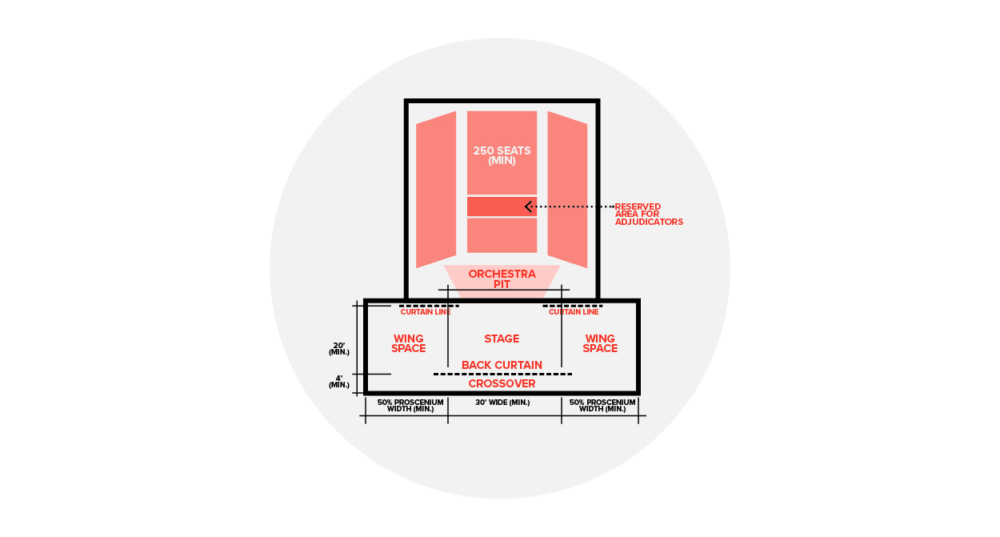
How to Make Your Facility the Star of the Show
The high school experience should be one of rigorous academics. However, well-rounded students also find their curricular connection to help them define their peer group, and keep them motivated in order to get to school daily and be a part of something greater than mere academia. For some, this area of interest is theatre arts. Today, students must acquire credit in the fine arts for graduation. Additionally, an exciting opportunity exists for a graduation endorsement in Arts & Humanities. Knowing this, theatre arts may become even more popular. Currently, every spring, over 23,000 Texas high school students compete in more than 300 One-Act-Play (OAP) competitions statewide. Hosting a OAP competition at your facility can be accomplished easily. If you follow these tips and meet the minimum standards, the show will go on.
Arrival and Storage
Teams are on a mission when they arrive, each knowing what to unload, and how to best leverage their items for maximum storage with prioritized placement so that time can be effectively utilized when it is their turn to compete. When teams arrive, they should have adequate space to safely unload equipment, props, and costumes, and have easy access to a designated storage area. Each team should have equitable storage areas available. Many times, the props also include large pieces of furniture to establish the set. Ample and equitable storage may mean spaces large enough for couches, tables and chairs.
Dressing Rooms
The OAP contest site should have separate male and female dressing areas for at least four competing teams at one time with proper lighting, mirrors, and restrooms for a cast and crew of 24 students. Dressing room facilities should be located relatively near the stage, as valuable time can be lost if teams are required to walk a great distance within the facility. This is crucial, as many plays require costume changes between scenes. Comfortable temperatures within the dressing rooms are necessary to offset the intense lighting during this critical time of preparation for students.
Stage
The stage must be prepared for a 24 student team. The space is active as timed preparation occurs by crew and technicians as the stage is set. Violation of time allocation means disqualification. A small stage with limited wing space can be uncomfortable and even dangerous for performers and stage crew members, as well as work against time requirements. The stage should be a minimum of 20 feet deep from the main curtain line to the upstage curtain or cyclorama, and have a proscenium width of at least 30 feet. Wing space equal to half of the proscenium width is required (minimum of 15'x 20').
Time!
Adjudicators are masters at strict timekeeping, as well as critique. Teams have only seven minutes for setup of the official UIL Unit Set (see diagram), which contains 28 neutral scenic pieces including steps, flats, ramps, platforms, and pylons. After a maximum 40-minute performance, the crew again has only seven minutes to strike the set before the next team takes the stage. Proper wing space makes this a smooth and safe transition for students.
Auditorium
The University Interscholastic League (UIL) requires a minimum of 250 seats for a OAP competition venue, but more are needed as teams are encouraged to watch all of the performances as a part of their own learning and critique process. As many as 12 teams of 24 students each compete in a typical regional competition, which quickly adds up to 288 students plus directors, friends and family. It is not uncommon for a 700 seat theater to fill up quickly. A designated zone should be reserved, and clearly marked, for the adjudicators (judges), so they can have a clear view of the performance and be close enough to hear the actors. Theater seating should be sloped to provide clear sight-lines to the stage, which should be a minimum of 40 inches above the auditorium floor.